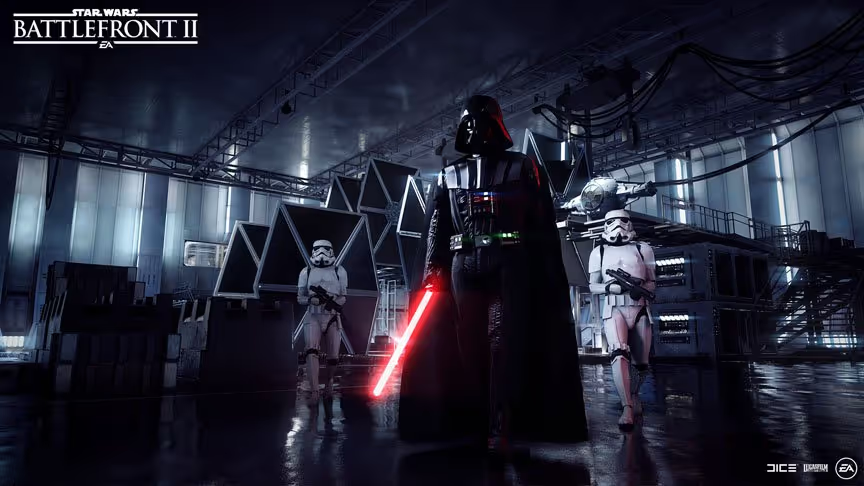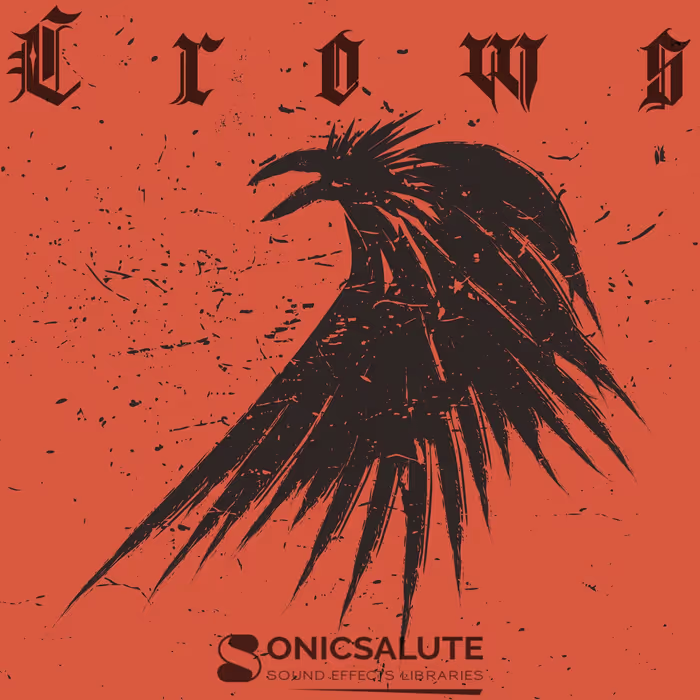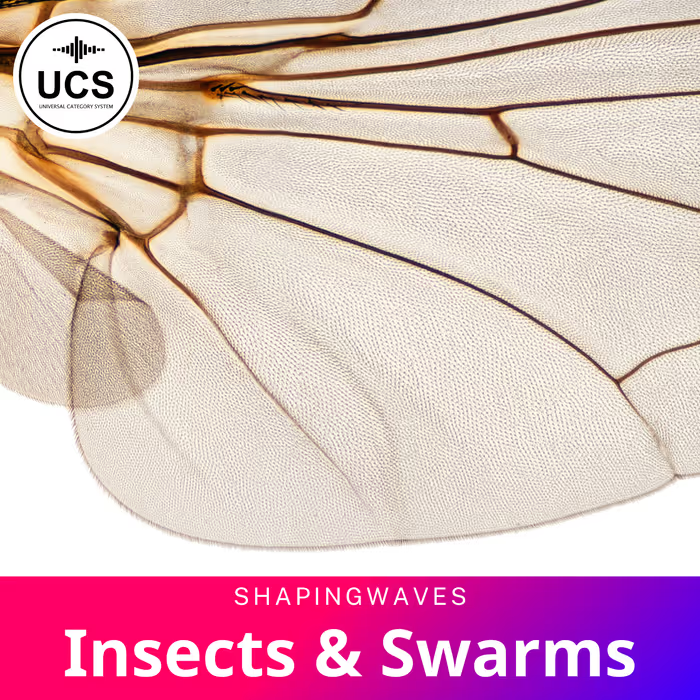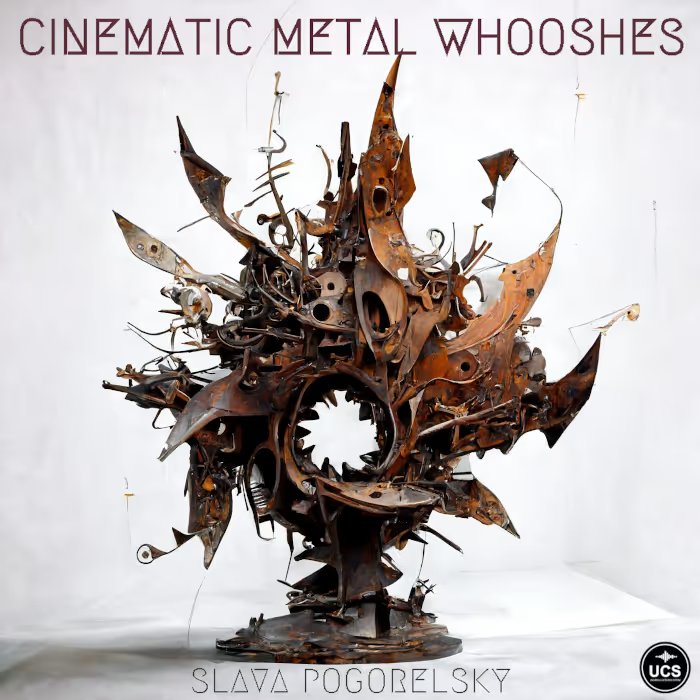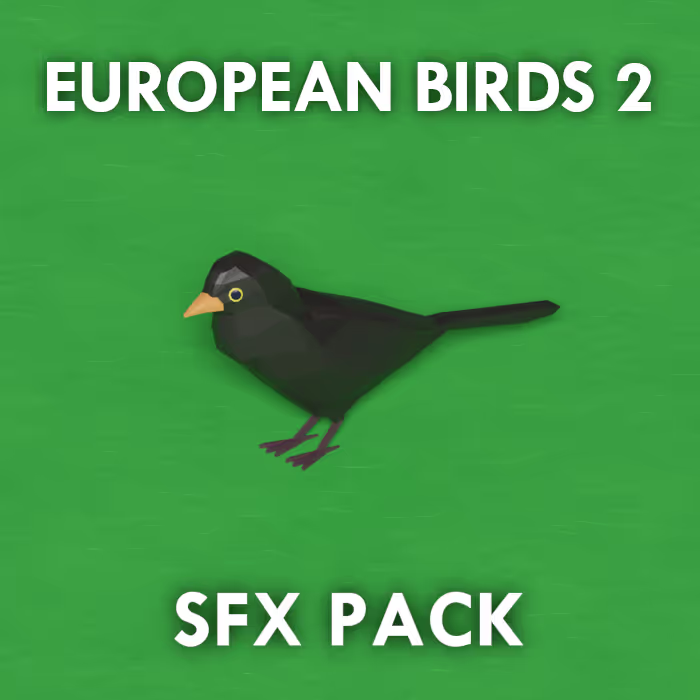The full-length reveal trailer for Star Wars Battlefront II
The sound of Star Wars is (and has always been) serious business. There’s an established sonic universe, a certain “Star Wars” sound that fans expect to hear no matter the medium, be it film, game, or series. The sound of the upcoming film Star Wars: The Last Jedi (in theatres Dec. 15th) needs to fit into that universe, as does the sound of EA’s new Star Wars Battlefront II game, which comes out today. So how do you get a film (that’s not yet been released) and a game to sound the same even though they’re created by different sound teams? Collaboration.
The EA DICE sound team in Sweden, led by award-winning Senior Audio Director Ben Minto, worked with sound teams from two other game studios. At Criterion Games (UK), he worked with Senior Audio Artist Nathaniel Daw, who was Criterion’s Audio Lead on Star Wars Battlefront II. And at Motive Studios (Canada), Lead Sound Designer Olivier Asselin headed up that team. Together they built a massive library of sounds to cover the Star Wars Battlefront II game. Those game sound teams collaborated (via their partners at Lucasfilm) with the film sound team at Skywalker Sound to make sure their audio assets were in line with the established sonic universe of Star Wars. Minto says they had three key pillars that guided their approach to the audio on Battlefront II — to “embrace,” “extend,” and “enhance” the existing sonic vocabulary of Star Wars. Here, Minto, Daw, and Asselin discuss the details of how they created the immersive and satisfying sound of Star Wars Battlefront II.
The Star Wars universe has an established lexicon of sounds. How much did the films’ sound influence your approach to the game sound on Battlefront?
Ben Minto (BM): After we had shipped our first Battlefront title (Nov 17th, 2015), in which we had focused only on the original trilogy, we were obviously curious and keen to learn how Skywalker Sound would approach the same task of updating the classic sounds, but for the sequel trilogy, starting of course with The Force Awakens.
Once we had heard Episode VII, it was reassuring to know that we were on the right track. The films and their soundtrack are everything when it comes to setting the audio direction for Battlefront; they define where we start from, our final target, and the quality benchmark we strive to reach. They also, almost universally, set the expectations for how everything in the Star Wars universe should sound, in any other medium. The legendary work of Ben Burtt and the Sound People on Star Wars is burnt into our collective sonic psyche; when I hear a donkey bray I always think Tusken Raider first and donkey second…
If you want to create an authentic Star Wars soundscape and trigger a Pavlovian-like response from your audience, then you stick with what has already been established and passionately embraced by your audience.
On some titles, you get to start from a completely blank canvas, on others there are going to be some ‘sketches’ or general expectations of what certain events should sound like, and within these expectations there can be a wide range of possible and acceptable ‘realities’ (e.g. AK47 comparison in games). With Star Wars parts of the canvas are already filled in and are very highly detailed and finished/set. How does the Millennium Falcon passing by sound? Or, an AT-ST stomping through Endor? These sounds are fixed; if you want to create an authentic Star Wars soundscape and trigger a Pavlovian-like response from your audience, then you stick with what has already been established and passionately embraced by your audience. You CANNOT stray from these, and where there is an instance in your title where the action closely matches the film, then the sound should also follow and use the same sound and where possible the exact same source material. When you are working on Chewie, you don’t just throw any bear recordings in there. To get the spirit of Chewie you must work from the original material as recorded by Ben Burtt and try to embrace the way he edited the sounds, else it’s not really ‘real’ Chewie and you will not be matching people’s expectations; it could come across as just a ‘bear’ sound and not everyone’s favourite wookiee. Respect the legacy and stay as true to it as you possibly can and where it already exists – use it! This was, and still is, one of our key pillars for the audio approach on Battlefront – “Embrace.”
[tweet_box]The fascinating collaboration behind Star Wars Battlefront II’s stellar sound[/tweet_box]
We know what an E-11 Blaster sounds like from the films, right? Well yes in a third-person sense, looking at it from a game POV. But what about in first person or iron sights (zeroth person)? Or, far far away? How does it differ firing indoors (Death Star vs Yavin Temple vs Naboo Palace), outdoors (from Hoth, to Endor, or on Kamino) or next door? Some of these situations exist in the films, some are hinted at and some don’t exist. A lot of our work was exactly this; starting from very well-known starting points, using the same core assets from the films and building out from these to cover all the situations we encountered in-game. Of course, this would be impossible without having the great support and access to materials provided by our partners at both Lucasfilm and Skywalker Sound. We start with what they have established and build out from that to suit our needs; this is the second of our (audio) design pillars — “Extend.”
The final pillar, “Enhance,” takes its lead from the wealth and diversity of the Star Wars sound universe – all those aliens, all those languages, all those machines for example are all parts of the immensely rich and deep tapestry of iconic sounds available to us. Matching this resource, with a Stefan Strandberg-ism (former Audio Director on Battlefield 3) – “Use audio to expand the experience beyond the visual verifiable,” clearly guides us to strive to make the Battlefront game audio experience as immersive and diverse as that found in the films, but without having to always rely on having matching visuals for all the sounds that you hear. There are birds in the trees of Takodana, but you will always hear more of them than you will ever see! And what was that sound behind that door? And where is that (diegetic) music coming from?
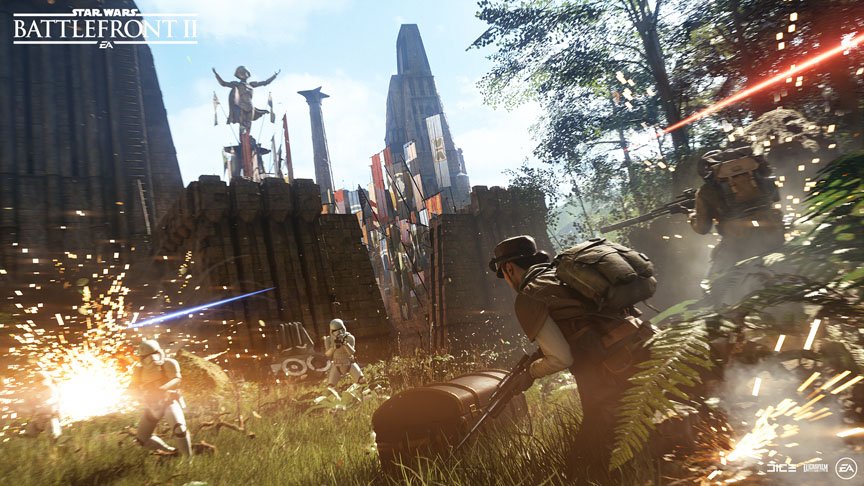
How about the other Star Wars Battlefront games? Did any of those audio assets translate to Battlefront II?
BM: It has been said that parts of the Pandemic Battlefront games were influenced by the features pioneered by DICE’s earlier Battlefield titles, and that in a way, these early Battlefront titles were their own take on that style of game, but set within the Star Wars universe.
I would say that we are related to those titles and that approach, in the fact that the audio team here at DICE had all previously worked on the Battlefield franchise, before starting to work on Battlefront. The “Extend” pillar, mentioned previously, has also been explained as, “Using the Battlefield recipes but starting with Star Wars ingredients, to create Battlefront assets” or simply, to take our learnings and techniques from Battlefield and apply those to the Star Wars source material to build and create what we need for our Battlefront titles.
Both groups started from similar points of reference in Star Wars and Battlefield, albeit over 10 years apart, with similar goals in mind, but to date we have never looked in to taking audio assets from the previous Battlefront titles and bringing them forward into our version. A lot has changed in the last ten years within games, game audio and the sound assets we use (determined largely by the amount of sound RAM available to us), and the material we use today is a lot closer to that found in the film stems than it is to the game assets from two console generations ago; that isn’t to say we can’t and haven’t learned from the work that has gone before us, but with regards to specific sound data going back to the original resource (the films) is going to guarantee higher fidelity and a better fit for us than going back to material from the PS2 and Original Xbox era.
The official gameplay trailer for the game
There were three game studios collaborating on Battlefront II. How was the sound work divided up? What studios handled what aspects?
BM: For SWBF2, we knew how the work for the whole game was going to be handled and split between each studio at a high level. DICE (Sweden) would handle the multiplayer component, Motive (Canada) would tackle the single-player campaign and Criterion (Guildford) would own the Starfighter Assault and Arcade modes.
DICE was responsible for the majority of the first Battlefront, with Criterion helping on the Speeder Bike challenge, and then further going on to develop the PSVR experience. DICE also developed the five DLC packs that complimented the first Battlefront, so, it made sense for DICE to continue to own most of the core systems that appeared in multiplayer, e.g. Blasters, Foley, Explosions, etc. as well as the other two parts of the game, plus providing ‘parent’ patch templates for almost all other systems, e.g. Planets, Music, VO, etc.
The theory was that this would ensure a solid platform across all the studios and help in bringing consistency and uniformity across the entire breadth and depth of the game audio content and the overall final mix (and it seems to have worked too!). Vehicles were split between Criterion and DICE, with Criterion handling Capital Ships, Starfighters, and Transport Ships, in line with them working on Starfighter Assault and DICE owned Ground Vehicles, Speeders, and Mounts.
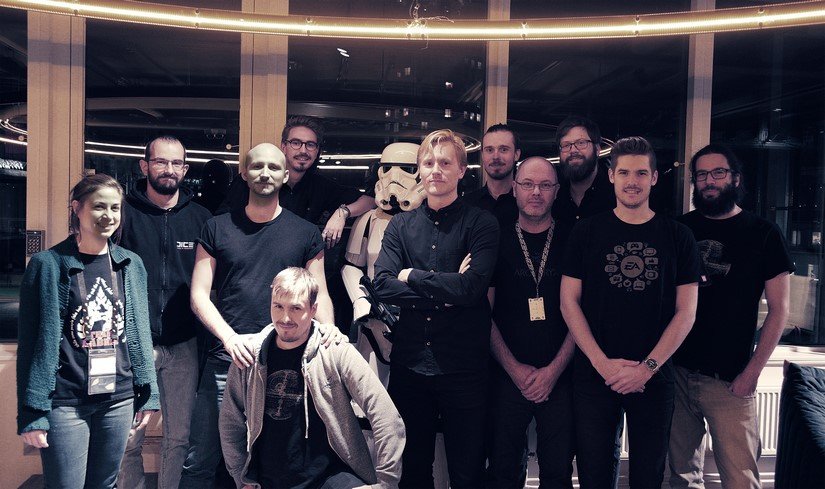
Johannie Gervais, Clement Visseq, Ludvig Kullberg, David Jegutidse (Front), Albin Jansson (Back), Stormtrooper, Gustav Rathsman, Philip Eriksson, Ben Minto, Mikael Mansson Grolander, Raoul Hamilton, Martin Wohrer
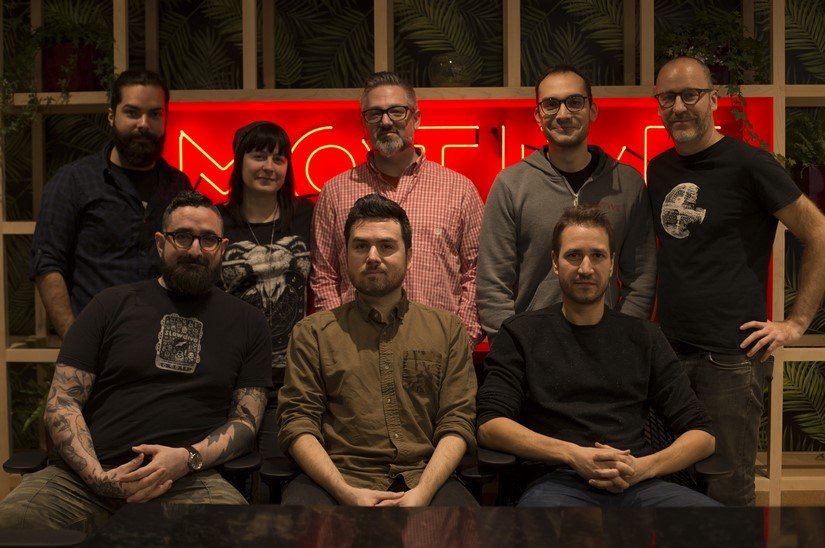
Back left to right : Julien Vachon, Marie-Renée Brisebois, Tony Prescesky, Luc Blanchard, Olivier Asselin – Front left to right: Terry Fairfield, Rodrigo Rubilar, Jean-François Tremblay
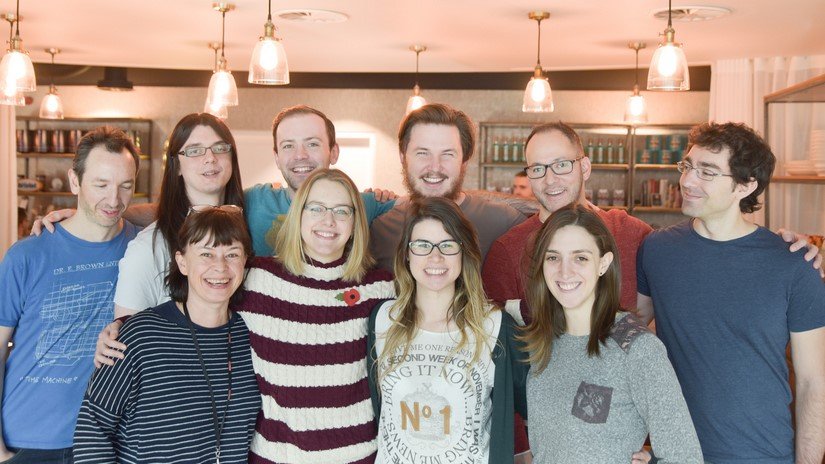
Back Row: David Varela, Peter Bliss, Jay Steen, Nathaniel Daw, Jeff Seamster, Mattia Cellotto – Front Row: Catherine Schell, Rosa Dachtler, Sian Harris, Mariana Botero
Criterion would then handle anything that was unique in audio related to their game modes, but also support the other studios where any of their vehicle assets appeared in other sections of the game.
Motive handled everything to do with single player, where obviously their entire journey was a lot more focused around the narrative thread of the campaign and the unique ‘snowflakes’ found therein.
Where it made sense of course, all three audio teams collaborated and worked closely together. For example, as with the first Battlefront, we were once again fortunate enough to work with composer Gordy Haab, who for Battlefront II wrote and recorded over twice as much music as for the first title. Each studio had their own demands and timescales for music, but we worked together to ensure that we all received what we needed for certain key points in the development cycle, without stepping on any of the other team’s schedules and making sure that we could split session time between us.
Over three sessions at Abbey Road — each one attended by members of the audio teams from each studio, we recorded over two hours of original Star Wars music, recording both the London Symphony Orchestra and the London Voices. And while the specifications for each cue came from a specific need from a specific team, once we had the final cues there was a lot of sharing and reuse between the teams.
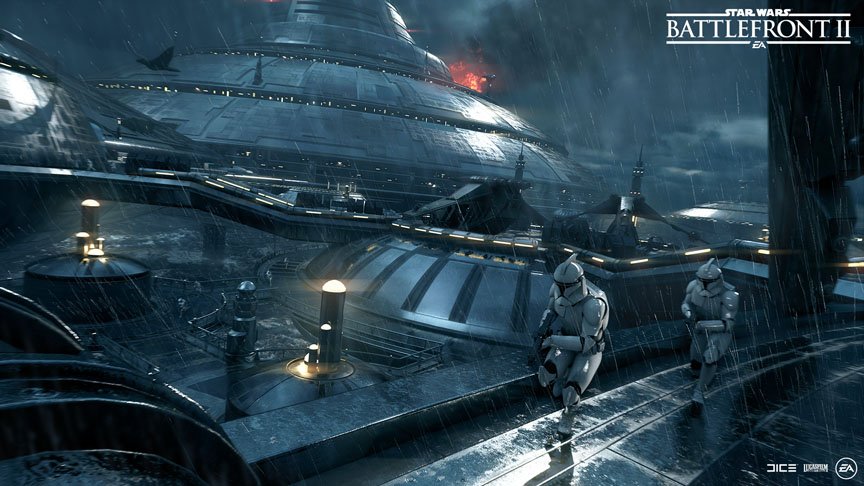
There are numerous ways players can experience Battlefront II — single-player story mode, and several multiplayer options. How did you manage all those sound assets?
BM: We all worked on the same game branch in Frostbite, the same Perforce project and from a common Jira database. We (at DICE) already had an existing folder structure, which we then cloned at a sub level down for both single player (Motive) and then Starfighter Assault and Arcade (Criterion). The folder structure was important in also setting our nomenclature. It was very clear which assets belonged in which folders, and which folders belonged to which teams.
Beyond the individual sound assets, there are also the patches that combine these assets at runtime to generate our ‘game sounds’ (see how we achieve it in Battlefield 1 with this video from Andreas’s GDC talk last year); this is where it can get complicated and expensive. We are fortunate enough in Frostbite to have a very well developed modular patch system with data inheritance (very well explained here). In practice, it could work something like this. DICE creates a blaster patch together with content, and check that in. Motive wants a new blaster for single player, a bit like the DICE patch but slightly different. They could duplicate everything and make the changes needed (expensive and costly to maintain if DICE changes their model and Motive wants to keep up with those changes) or they could create a child patch of the DICE parent model and just point to say a new wave asset for one part of the model and tweak the overall fire rate. In the latter case, we only need to store the new sample and the playback change that differs from the parent patch, which of course is cheaper than a full clone and keeps an inherent link between the two models. This practice is essential when handling the sheer volume of assets and patches in a title like SWBF2 and even more so when development is split across three studios and multiple time zones.
Tell me about the Starfighter Assault mode. How does that multiplayer mode sound? Sonically, what went into creating that experience of battling in space?
Nathaniel Daw (ND): Star Wars Starfighters have some of the most iconic vehicle sounds in all of sci-fi; they’re something we all grew up listening to. Delivering on the space battle fantasy that has built up in all of our minds is crucial to our audio work. As a result, the core of the mode’s sound is the player’s engines. Everything is built upon that. It is definitely a balancing act — how can you make sure the classic scream of a TIE Fighter is present without exhausting the player’s ears?
The new Starfighter Assault mode has very responsive handling, so we’ve made sure that the vehicle feels just as responsive to the player’s input. We play ‘punch’ sounds when the player accelerates, brakes, or turns aggressively. We also reflect the strain of turning and diving by adjusting the engine content, and also with rattle and strain layers. This also helps make bigger craft feel weightier (such as the Republic’s ARC-170), or smaller craft feel nimble and quick (such as the Separatists’ buzzy little Droid Tri-fighter).
Another big challenge of battles in space is that the distances involved are much larger than on the ground. Because there is often no reference point for scale, it can be hard to tell if something is 500m or 1km away visually – so although we share a lot of explosions and such with planetary battles, we need to have completely different distancing in space.
We use a proximity effect when the player flies near surfaces in order to make the vehicles feel connected to the level they are in, and help the player to have more spatial awareness. This is coupled with a whoosh-by system that delivers the sound of near misses. Finally, we use reverb on any tunnels or other enclosed areas. It’s Star Wars so there’s sound in space.
We also want Starfighter Assault to have the feel of a full-scale space battle (or a “Star War”). We realized that to deliver that feeling we would need a big cast of wingmates to make the battle feel real and personal.
One other challenge with this is making the player still feel like a real character, not just a pilotless vehicle. We also want Starfighter Assault to have the feel of a full-scale space battle (or a “Star War”). We realized that to deliver that feeling we would need a big cast of wingmates to make the battle feel real and personal. As a result, Starfighter Assault has unique wingmate, hero, and commander VO. There were some challenges with this, such as the Droid Starfighters, who only communicate through a high-pitch chatter. We were able to get around that by incorporating the chatter for a lot of lines, while relying on a Tactical Droid to deliver the lines that needed to be intelligible. Our cast was fantastic to work with, and each faction really feels different as a result. This makes every battle feel alive, and gives the mode its own special flavour. Couple that with Gordy Haab’s exceptional score and it makes for a thrilling space battle experience!
In single-player story mode, the player takes on the role of Iden Versio, leader of an Imperial Special Forces group called the Inferno Squad. Sonically, what are some of her unique characteristics?
Olivier Asselin (OA): There are many characteristics that stand out and help build the sound of the Inferno Squad. One of the main pillars is the music. Iden’s theme was one of the first cues we tackled. Once again, it was all about following what Star Wars does so well in creating iconic themes for their characters. Gordy Haab, our composer, managed to create an amazing theme for Iden. We needed a strong melody — an ear worm, something that would fit in the rich Star Wars universe, that was both memorable and versatile. We needed something that could be used in many situations throughout the campaign and that could also carry a large spectrum of emotions.
On the gameplay side of things, most of Iden’s abilities come from her little droid companion. That was quite a team effort creating the voice, the locomotion, and the different abilities, namely the shield, shock and healing abilities. First, we looked at how the Droid voices were created for the orig-inal Star Wars and because of the nature of Iden’s companion droid, we logically looked at R2-D2 as a main reference. We also referred to the sounds of the Imperial Probe Droid (EP5), the Imperial Mouse Droid, the Torture Droid (EP4) and ID9, the Seeker Droid from Rebels.
Using a Modular Synthesizer as the center piece, we managed to build a patch that allows us to cre-ate and manipulate the sound and give the tone and emotions we were looking for. The technique is based on the same type of manipulations Ben Burtt used to create R2-D2 (pitch modulation, LFO, ring mod, sample and hold, etc.). We modulate the sound parameters (pitch and filter frequency cutoff) with a joystick and ‘play’ it like an instrument to create numerous variations of similar sounding ele-ments. We then modulated these with a human voice element and some formant filtering to shape the timbre. This source was the building blocks used to create “lines” for the droid.
Another aspect that was super important to nail was the sound for the cinematics. Of course, we wanted the soundtrack to be as polished as the movie experience, but also to be representative of the gameplay to allow seamless transitions between the two.
For trailers and cinematic experience, we’ve been fortunate to work with Charles Deenen and his team at Source Sound. As always, they did an amazing job covering our numerous cinematics. From the dialogue edit to the final mix, they delivered a top-quality experience that truly follows the Star Wars ethos and matched our gameplay experience.
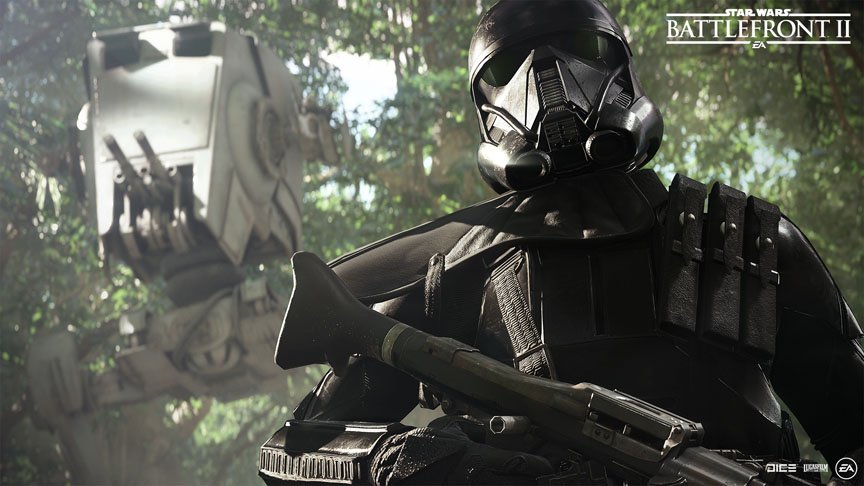
What were some challenges you had in creating the sound for the single-player campaign?
OA: The biggest challenge was to make sure we have a uniform soundscape between the three stu-dios. There was a lot of interdependency between the three studios and constant communication and feedback was the key.
For example, DICE worked on all the gameplay elements, such as the weapons and Criterion on vehi-cles. Both of these have a huge part to play in the single-player experience. Creating a campaign has some very specific needs; the story telling and narrative always takes precedence over everything else. We had to make mix decisions to ensure that the player experience focused on the story but also respected the established soundscape.
The trailer for the single player campaign
Locations: there are eighteen planets (including Starkiller Base and the Death Star II) — all from the Star Wars films. How did you approach the sound of those locations in the game? Sonically, how tied into the films did you get?
BM: What’s interesting about the different locations is how much material there is to start from. For example, Tatooine has been visited four times in the main films, so there is a wealth of reference and source material available, whereas Takodana we have been to only once, and our two visits to Yavin 4 have mostly been spent inside the Temple, and not in the forest. Single player locations like Sullust, Vardos and Pillio have never been in the main films, and while Sullust was visited in the first Battlefront, Pillio and Vardos are new for all of us.
As was mentioned before, our ethos is, “if it exists we use it.” The way to approach the planets, I found, was to start with the most well-known and well resourced, and learn by listening. I choose Endor to start with, as there were a lot of recognizable individual elements in the ambience tracks we were supplied with. There was one main mixed stereo track that was the Endor everyone knew and expected. Thankfully by using Izotope RX and Waves WNS it was quite straight forward to pull most of the parts of the mixed track out – four different distinct bird calls, two different crickets, some individual one shots (something hyena-sounding?? Probably a pitched-down bird), which after they were removed left behind a fairly clean and pared-down base ambient track from which to work.
Then I looked at each part and cleaned, edited, updated, and complimented where needed. With the base track, I used that as the core for building a new quad ambient bed, adding new higher-fidelity air tracks and then for some additional colour and variation I could use tropical forest recordings from which I would remove the cicadas and crickets, take them down an octave and sit them behind the original Endor track, thereby adding an extra layer of depth. Then with the individual samples that I extracted, the birds and crickets etc., these are triggered around the listener at runtime as one shots (using what we call a Big World system) to add variety, randomness and positional enhancers to the ambience.
In the case of the crickets, there was plenty of variance in the extracted samples, but for the half-speed Chuck Wills Widow I had to track down some new recordings to give us more variation. We also added plenty more ‘Big World’ assets to various parts of the map, including Ewok shouts and their alert horns, as well as more subtle wind gusts, leaf twirls and tree squeaks, to add more air, ‘nature’ and some narrative to the level.
I did find that Bernie Krause’s explanation (from his book The Great Animal Orchestra) for how a natural soundscape evolves over time as new species take up residence was very useful. Each species, when the system is in equilibrium, sits in its own unique register across the audio spectrum …
Starting like this was a way to teach yourself how these ambiences were originally constructed and the work that went into making them. So, as you progressed to working on levels that had less source material you understood what was needed to fill the gaps, and by the time you reached the new ‘virgin’ levels you had a grasp of how to build a level from scratch and the steps to go through. I did find that Bernie Krause’s explanation (from his book The Great Animal Orchestra) for how a natural soundscape evolves over time as new species take up residence was very useful. Each species, when the system is in equilibrium, sits in its own unique register across the audio spectrum, in terms of frequency, but also with variation in duration and tempo of each call. If you are trying to construct a new alien ‘biophony,’ following this rule-set guides you while building your own orchestra of alien species that sit well together and helps to sell an experience that feels instinctively right.
By taking this approach, and not just for planets, it meant when it came to adding brand new sounds (not just new variations or extensions to existing sound sets) to the Star Wars universe, I think we were more understanding, considerate, and respectful when doing so and hopefully they sit well in the overall soundtrack, and feel like they belong to Star Wars and are accepted and appreciated by our audience.
ND: For the Space levels, we needed to make them feel like they weren’t empty (even when they mostly were). Often in movies space or huge spacecraft are ambiently depicted with a low frequency rumble. However, we didn’t want to muddy up the mix (or fatigue the player) with too much low-end content, so we created ambient sound that had less low frequency and more movement, that still implied weight and spaciousness. We found filtered crumbling rocks and contact microphone recordings worked well for this. In addition, we looked for opportunities to use higher frequency content, such as fire and electricity. Fortunately, lots of things tended to be on fire or sparking wildly.
Kamino (the only Starfighter Assault level not in space) was a particularly challenging level for getting the mix right, as we had the sea, wind, rain, and thunder taking up a lot of frequency bandwidth. We solved this by reducing as much noise as possible in the content itself, and favouring more textural sounds. We created a global ambience of stormy rain, and then had the sea layer come in only when the player was close to the sea itself, with additional wave sweeteners. There is also an in-cockpit layer of splattering rain for added immersion. This content is all quite low priority in the mix, so it will always get out of the way for the more important gameplay sounds.
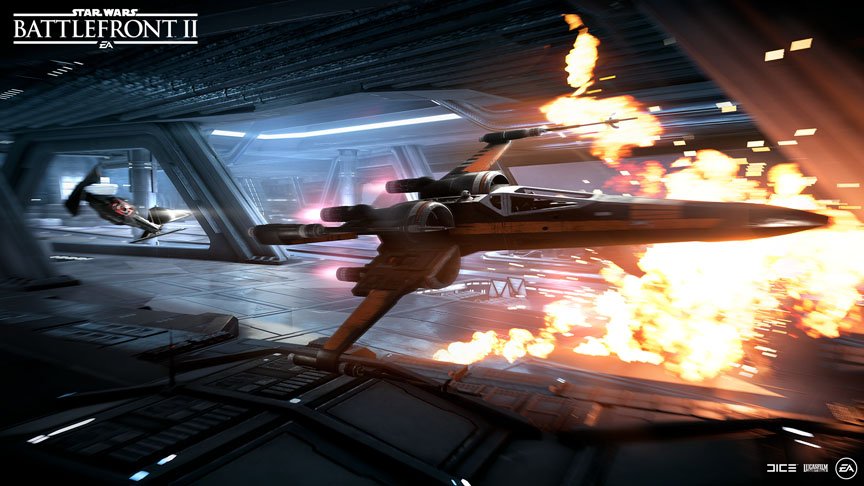
Vehicles: players have access to vehicles from all three eras of Star Wars. How did you recreate the vehicles’ sounds? What was the most difficult vehicle to recreate? Why?
ND: We started by going wide on creating Starfighter content — there was a lot to create! In the first game, there were four playable starfighters and two hero ships, while in this game we shipped 18 playable starfighters and nine hero ships, as well as transports, corvettes, and capital ships. Often the only reference that existed for some vehicles was a single pass-by (and occasionally not even that).
We spent a lot of time extrapolating from this reference to create responsive engines that capture the spirit of the vehicle. Each playable vehicle needs three separate loops, correlating roughly to the thrusters, the wind rush, and the ‘character’ of the ship, with distant versions of those loops, as well as spawn sounds, pass-bys, and an interior loop.
One of the most crucial parts of selling the dogfighting experience is the pass-bys. We make them almost as big as the explosions, and spend a lot of time making sure that the character of the ship is clearly heard in the pass-by asset. Some of the biggest variation in sonic colours is in the pass-by content, from Slave I puttering past you to Darth Maul’s Scimitar screaming by with a banshee howl. It still makes me smile every time I hear the huge roar of a squadron of TIEs whipping past.
The sound of the ship depends highly on what era it is from. The original trilogy tends to use lots of raw, real sounds – lots of planes and animals. The new trilogy stays quite true to that original trilogy sound, but everything is much cleaner and crispier. The prequels, on the other hand, use a lot more synthetic sounds. Where there was reference we would work from that, trying to make a dynamic starfighter that felt authentic to its movie reference.
The best creative challenge with the vehicles was developing the sound of ships with little to no reference, and making them still feel authentic. We would create something that matched the character of the ship, all the while keeping within that Star Wars palette. We try to use similar source content to the movies where we can – lots of planes, F1 cars, and several animal sounds. It helps to make sure there is a layer of noise and air in all the ships, so they always feel grounded and real – like they are an actual craft flying around.
What were some of your favourite creative opportunities for sound on Battlefront II?
ND: Top of the list has to be implementing the sound of Slave I’s Seismic Charge. This is such an iconic moment in Episode II, and it had to be represented with full impact in the game. We knew we had to capture the same awesome moment in-game, which is as much about the big silence that precedes the explosion as it is about the explosion itself. Spending time carving that silence out was a great mix challenge and a fantastic opportunity to make something feel bigger by removing sound rather than adding it. Even after firing thousands of seismic charges I still love that moment to bits.
One of my other favourites was creating the Starfighter Droid chatter. We took alien dialogue and used a combination of ringmods and pitch shifting plug-ins to create the same effect, with different colouring for the different droid craft. The result has this wicked glee that I love listening to, and combined with our Tactical Droid and Droid Commander, the Separatist VO is one of my favourite things in the game.
As a personal guide, the emotion and performance for each droid is characterized by if it’s a ‘goodie,’ in which case you can take inspiration from say R2-D2 or BB-8, or even Wall-E or Huey, Dewey, and Louie.
BM: We have a lot of background droids in the game, and again some of them are very well known, both visually and sonically, like the MSE-6 and GNK for example (the Mouse Droid and Gonk Droid) and for some of them we just had to get our hands dirty and make up new ‘voices’ as they had never actually ‘spoken’ before. For SWBF2, I had six new R-Series droids, that are part of the Living World setup across different planets, that needed basic idle and alert sound sets, namely; R2-Q5, R4-A22, R4-I9, R4-M9, R5-A2 and R5-J2. As a personal guide, the emotion and performance for each droid is characterized by if it’s a ‘goodie,’ in which case you can take inspiration from say R2-D2 or BB-8, or even Wall-E or Huey, Dewey, and Louie. Then for the ‘baddies,’ you look more towards say EV-9D9 or the Viper Probe Droid, with maybe subtle hints of HAL, Cylon or Dalek-like performances or tones.
As for making the sounds, that was a lot of trial and error and experimenting – the best kind of fun. For one of them I taped a DPA lav microphone to the bottom of my phone, running Bebot, but with my phone half way inside my mouth so I could add some format like control/filtering by opening and closing my mouth, this then went through a Cwejman Frequency Shifter (gently altering the carrier frequency as an additional performance control) and was recorded via tape (a single repeat delay on a Roland RE501 Chorus Echo).
For another voice, I took inspiration from Kraftwerk’s very dry Votrax speech synthesizer vocal track on Uranium and used Plogue, a plug-in that had an emulation of the Votrax chip, as the starting source. This I then ran through a Metasonix Ring Modulator and an analogue (BBD) delay, with a touch of phasing from Waves Reel ADT.
Maybe about 1/4 of these experiments would work. You would have an idea, quickly get it up and running and test the range of the setup and suitability of the end sound – was it Star Wars? Failing quickly was key, and one experiment and its learnings (or failings) was usually the starting point for another approach.
In terms of sound, what are you most proud of on this game?
BM: Being a part of one team, that was an amalgamation of three audio teams, that with plenty of external help, worked effectively as one big, and for the most part, happy family!
OA: Motive is a new studio at EA. Our team is composed of talented and experienced people from various game studios, with most of them having never worked together before. I’m proud of what we managed to accomplish in less than two years. We delivered a solid campaign and a great sound experience. We have excellent music, sound design, ambiences, voice over, and cinematics. The team did an amazing job putting all this together and I hope that our players enjoy this experience as much as we did creating it.
ND: Starfighter Assault came together really well. Even though there’s a lot going on, each element (vehicles, weapons, VO, music, abilities) is given its moment to shine. We never felt like we needed to compromise anything in order to let something else play. This wasn’t just in the mix – we played with timing a lot to make sure that moments wouldn’t stomp over each other. When playing Starfighter Assault, it feels like a real celebration of Star Wars space battle audio, and I love it!
A big thanks to Ben Minto, Nathaniel Daw, and Olivier Asselin for giving us a look at the hugely collaborative sound design in Star Wars Battlefront 2 – and to Jennifer Walden for the interview!

